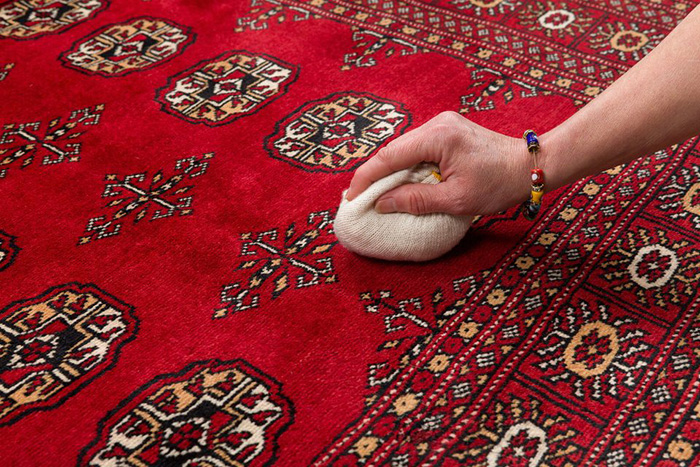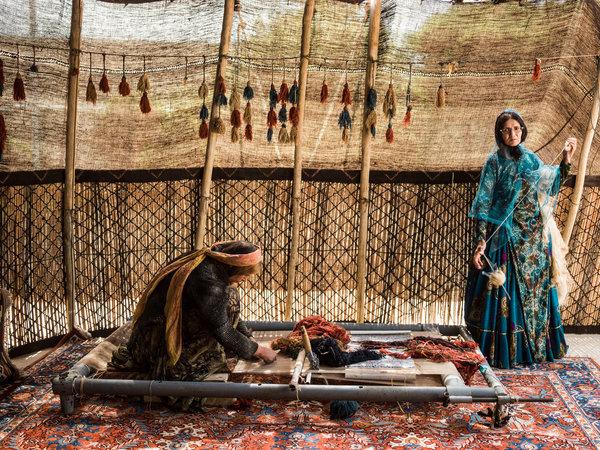Spot cleaning your Persian and Oriental rugs is a useful practice that helps maintain their appearance until you can arrange for a professional cleaning. It’s important to note that all manufacturers recommend having your rugs professionally cleaned at least once a year, or twice a year if they experience heavy soiling. However, over-cleaning can be detrimental and may reduce their lifespan.
One common issue we encounter is homeowners attempting to clean their rugs themselves, which often leaves behind unsightly residues.
Before attempting to treat any stains, be cautious, as using the wrong methods can cause further damage and end up costing you more than if you had called in a professional. We believe certain tasks are best left to experts who possess the knowledge and experience to address the situation effectively.

While your beloved pet may bring joy to your family, they can also be the biggest threat to your rugs. When accidents happen, it’s time to call us for a professional cleaning. One major concern, especially with cats, is odor.
Urine can impact the dyes used in rugs, but not every incident will result in a permanent stain. The outcome depends on factors such as the urine's composition, the dyes and finishes used, and how much time has passed since the accident. Some urine spots may be immediately visible, while others might take weeks or months to reveal their effects. Dyes can change color upon contact with urine, causing lasting damage.
When urine spots develop gradually and go unnoticed for an extended period, both the dyes and carpet fibers can sustain permanent damage. For instance, in beige carpets, blue dyes can be adversely affected by pet urine, leaving behind red and yellow hues that create stains appearing in red, yellow, or orange.
If left untreated, pet urine can harm your carpet in several ways. Moisture can weaken the carpet layers, leading to separation or delamination of the backing material. Seam areas are particularly vulnerable and may separate over time.
Odor is another significant issue, especially with cat urine. If the source of the urine isn’t completely eliminated, it’s challenging to remove the odor entirely. Many products on the market can help combat odors, but they often only mask the problem. In high humidity, the odor may resurface. Recently developed enzymes available at pet stores and veterinary offices are more effective, but they are often best utilized by carpet cleaning professionals. If odor removal proves impossible, the affected carpet area can be replaced with a piece from reserved scrap. In cases where carpet replacement is necessary, it may also involve replacing the cushion and even the subfloor.
Some carpet manufacturers have introduced backings that resist spills and prevent moisture from penetrating the carpet and reaching the cushion or subfloor. Check with your carpet dealer for more information on these products.
At the heart of a Persian rug lies a rich tapestry where traditional Persian design intertwines harmoniously with mythology. The motifs, forms, patterns, and symbolism found in Persian carpets convey the mythological stories of ancient Persia.
What shaped Persia and Iran? It was the artistry of weaving and its cultural significance that historically linked Persia to its role as a "mirror of civilization," long before the Pazyryk period.
In the Avesta, the holy book of Zoroastrianism—the predominant religion before the advent of Islam—Ahura Mazda is the principal deity and creator. Certain passages (Yasna 29.6 and 48.9) refer to Ahura as “Vafush” in the original Avestan text.



Request Cleaning Services